No products in the cart.
The Norman Medieval Sword (#1307)
With its iconic crucifix guard and wheel-shaped pommel, the Norman sword (1000-1300 AD) is arguably the most recognizable sword in human history. The Norman or Crusader sword (Type Xa) is frequently depicted in medieval art including the Bayeux tapestry (an historically rich and important embroidery that depicts the Norman Conquest) and commonly exhibited in various Hollywood blockbuster films. Long studied by scholars, the Norman sword is what many people picture when they imagine a “standard” medieval European sword. Darksword Armory’s reproduction of the Norman sword is given a modern upgrade with heat-treated 5160 steel. This well-balanced piece is as battle-ready as the originals would have been, and pays homage to the classic design found in art and history….(Read more)
USD545.00 – USD850.00
SKU: N/A Categories: Broadsword, Medieval Swords, Norman Swords, One Handed Sword, Swords

The Norman invasion of England is arguably the most defining event of Britain’s history. The blending of Norman culture with the pre-existing Anglo-Saxon heritage of the British Ilse (not to mention the Celtic peoples present at the time) represented a massive change on every level of society. The Norman peoples, descendants of the Norse, were a distillation and refinement of their Viking ancestors. Nowhere was this more clear than in the weaponry they developed, which changed close-quarters combat for centuries afterward.
Prior to the 10th century, long-bladed weapons used in Europe fit into Petersen’s typology of the Viking sword – relatively uniform blade types with different styles of hilt. The transition from these weapons to the swords of the medieval period took shape between the 10th and 11th centuries. While the blade geometry remained relatively constant, the main changes were a gradual transition towards a crucifix guard and wheel pommel. The geometry of the swords found from the 12th century clearly defined the classical examples of the Norman swords and image of the “chivalric knight”.
This transition did not reflect a new artistic flavour, but rather came from the shift from pagan to Christian society. The Normans were the descendants of the Scandinavian Norsemen who raided the European coastal settlements at the outset of the 8th century. Despite the Norman’s conversion to Christianity and their adoption of Frankish customs, the Normans retained many of the traits of their Germanic ancestors and way of life.
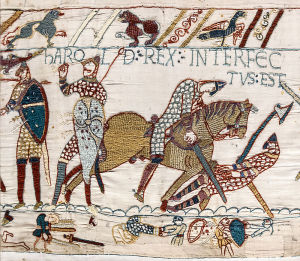
It is in this period that Ewart Oakeshott’s typology begins to track and define the evolution of the medieval sword. Type X, the first type in Oakeshott’s typology, represents the transitional design that links the previous style of longsword to the medieval designs. The Norman sword, sometimes referred to as the crusader sword, typically classified as a type Xa or type XI, had slightly evolved from a type X. Having a narrower fuller and slightly sender blade, the medieval sword of the 11th Century was still largely a slashing weapon, as its’ earlier counterpart. It was not until the end of the 12th century that we see a more defined tip, transforming the medieval sword into a thrusting weapon.
While the blade transitioned into a slightly more tapered and pointed tipped weapon, the cross guard and pommel were the main transitional changes. While the accentuated tip came from years of first-hand combat experience, necessitating a more functional tip for thrusting, the guard emerged as a change in religious beliefs (evocative of the Christian cross). The amalgamation of both transitions resulted in a lighter, more versatile weapon that allowed both slashing and thrusting during close quarter combat. The transitional crucifix guard turned out to be a defensive advantage over the Norman sword’s predecessor, the Spatha. Not only did the longer quillons of the sword provided better blocking capabilities, it also provided the fighter a blunt stabbing weapon in the trenches of close quarter combat. The Norman sword’s longer guard therefore proved more effective for both defensive and offensive functions.
The crusader sword (Type Xa) may have had a relatively conservative geometry, it nevertheless introduced a better balance and was more graceful in form. While generally, the same proportions as their earlier counterpart, the swords of the 11th c had more tapered narrowing blades making them easier to wield. This transition was not only due to the changing fighting techniques, from slashing to thrusting, but also due to the advent of heavier armour and cavalry.
The Norman Sword is finely engineered for the most discriminating collector. Designed for actual medieval combat, our staff conceived the Norman sword with a responsive, well balanced and resilient core. The hand-crafted blade, wheel pommel and guard have been designed from originals, conserving the authenticity and “feel” of the originals. The Norman sword is not just a reproduction: it is a recreation of one of the most important swords of human history.
The sword can be ordered in various scabbard options (standard, With interlaced sword belt, or Deluxe Embossed with Belt and bronze buckles)
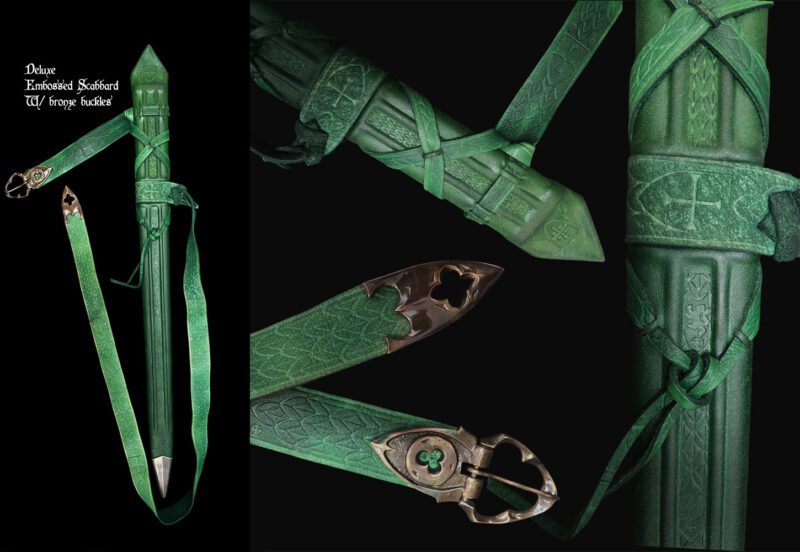 Specs:
Specs:
Blade: 5160 High Carbon Steel.
Dual Tempered HRc 60 / 48-50 at the core
Total length: 34″
Blade length: 28″
Width at base: 2″
Weight: 2lbs 12oz
POB: 4″
Customer feedback about the Norman battle ready Sword:
“Dear Eyal, Just want to thank you for the sword and dagger. Package arrived yesterday and the sword far exceeded my expectations – it is perfect and the scabbard and belt are also very nice and well done. Thanks again and let me wish you good luck in your work and many satisfied customers (and I am definitely one of them!)”
~ Martin Bohaty, Czech Republic
“I received my sword yesterday and I had to tell you how impressed I am !! It is everything I could hope for and more. Thanks for providing such a magnificent piece at an affordable price”.
– Scott M. Florence Colorado.
Hi, just wanted to let you know that I just picked up my Norman sword today and just finished unpacking it and all I can say is, I`m impressed…beautiful sword, what a nice piece!!! Thanks a lot.”
– Ben, USA
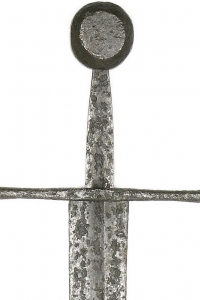 | 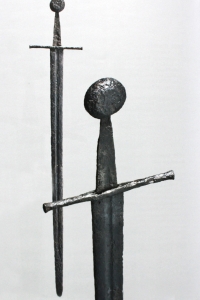 | 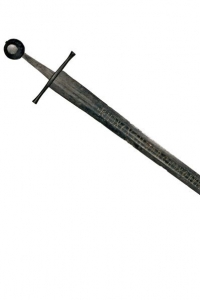 |
3 reviews for The Norman Medieval Sword (#1307)
Add a review Cancel reply
This site uses Akismet to reduce spam. Learn how your comment data is processed.
The Norman Sword
"See, I grasp England in my hand".
- William the Conqueror
The Normans were a people who greatly influenced the development of Western Europe, famed for their innovation and culture. It may be surprising for people in modern times, though, to learn that the Normans were once called the Northmen or Norsemen – and were descendants of the Scandinavian raiders known as “Vikings.” Under the leadership of Rollo, a Viking raider, the Norsemen established control over an area of what would one day be known as France. Their control over this area was so absolute that they were granted ownership by Frankish King Charles III, called Charles the Simple, in 911 CE. The Scandinavian Vikings who raided the European coastal settlements at the outset of the 8th century had become not only landed immigrants, but title-holding nobility.
The Norsemen adapted to their new circumstances, and quickly, as Rollo himself converted to Christianity at the urging of his Frankish hosts with his people soon following. The Norsemen – now firmly established as the duchy of Normandy – began advancing at an incredible rate. Art, architecture, music, politics – no area of Frankish culture was untouched by their influence. Normans became known as paragons of Christian virtue and Medieval nobility, Even the local language was changed, becoming known as Norman French. Despite the Normans’ conversion to Christianity and their adoption of Frankish way of life, though, the Normans retained many of the traits of their Germanic ancestors – including skill in battle and tactics.
While many areas of Europe were invaded, conquered, or aggressively settled by the Normans (including the establishment of the Kingdom of Sicily), there is no more famous military venture than the 11-th Century Norman conquest of England. William the Conqueror, a Norman Duke, was a distant relative of Anglo-Saxon King Edward the Confessor. Upon Edward’s death in 1066, William led a train of cavalry, archers, and foot soldiers in an invasion of the British Ilse. They soundly defeated the gathered Anglo-Saxon army during many famous encounters such as the Battle of Hastings. William spent the next six years establishing his reign in Britain through granting of land and title to the Norman nobility who accompanied him and the construction of castles throughout the land. The influx of Norman culture into the Anglo-Saxon regions caused vast changes in the lives of both groups, and still influences the inhabitants of modern Britain today.
The Two handed Norman Sword, is an excellent example of the quintessential medieval sword. Known for its crucifix form, it is a classic design that has both many surviving replicas and depictions in period artwork. This design was famously presented in the Bayeux Tapestry: an embroidery that depicts the Norman Conquest. The Norman Sword, classified as type XI with elements of type XIIa, is elegant in its simplicity. Working on the Two Handed Norman Sword was a Challenging endeavor. Given the historical significance and popularity of Norman swords, the artists at Darksword Armory opted to recreate a Two handed version of the traditional single handed Norman swords depicted in the Bayeux tapestry. The Guard, being very symbolic, served not only as a cross for praying prior to battles and ceremonies, but also as a counter block in combat. The Guard, individually crafted from mild steel and finely shaped with smooth octagonal lines, is further accentuated by the decorated leather wrapped Oak handle.
The two handed Norman sword is not only one of Darksword’s best sellers, it is one of the top “Staff picks” in their collection. Hand crafted and properly engineered for durability in combat, the Two Handed Norman sword, is a very solid, responsive, and perfectly balanced weapon. The blade, hand forged with 5160 High Carbon Steel, is skillfully Dual Hardened for precise cutting while remaining flexible for enduring combat.
"See, I grasp England in my hand".
- William the Conqueror
The Normans were a people who greatly influenced the development of Western Europe, famed for their innovation and culture. It may be surprising for people in modern times, though, to learn that the Normans were once called the Northmen or Norsemen – and were descendants of the Scandinavian raiders known as “Vikings.” Under the leadership of Rollo, a Viking raider, the Norsemen established control over an area of what would one day be known as France. Their control over this area was so absolute that they were granted ownership by Frankish King Charles III, called Charles the Simple, in 911 CE. The Scandinavian Vikings who raided the European coastal settlements at the outset of the 8th century had become not only landed immigrants, but title-holding nobility.
The Norsemen adapted to their new circumstances, and quickly, as Rollo himself converted to Christianity at the urging of his Frankish hosts with his people soon following. The Norsemen – now firmly established as the duchy of Normandy – began advancing at an incredible rate. Art, architecture, music, politics – no area of Frankish culture was untouched by their influence. Normans became known as paragons of Christian virtue and Medieval nobility, Even the local language was changed, becoming known as Norman French. Despite the Normans’ conversion to Christianity and their adoption of Frankish way of life, though, the Normans retained many of the traits of their Germanic ancestors – including skill in battle and tactics.
While many areas of Europe were invaded, conquered, or aggressively settled by the Normans (including the establishment of the Kingdom of Sicily), there is no more famous military venture than the 11-th Century Norman conquest of England. William the Conqueror, a Norman Duke, was a distant relative of Anglo-Saxon King Edward the Confessor. Upon Edward’s death in 1066, William led a train of cavalry, archers, and foot soldiers in an invasion of the British Ilse. They soundly defeated the gathered Anglo-Saxon army during many famous encounters such as the Battle of Hastings. William spent the next six years establishing his reign in Britain through granting of land and title to the Norman nobility who accompanied him and the construction of castles throughout the land. The influx of Norman culture into the Anglo-Saxon regions caused vast changes in the lives of both groups, and still influences the inhabitants of modern Britain today.
The Two handed Norman Sword, is an excellent example of the quintessential medieval sword. Known for its crucifix form, it is a classic design that has both many surviving replicas and depictions in period artwork. This design was famously presented in the Bayeux Tapestry: an embroidery that depicts the Norman Conquest. The Norman Sword, classified as type XI with elements of type XIIa, is elegant in its simplicity. Working on the Two Handed Norman Sword was a Challenging endeavor. Given the historical significance and popularity of Norman swords, the artists at Darksword Armory opted to recreate a Two handed version of the traditional single handed Norman swords depicted in the Bayeux tapestry. The Guard, being very symbolic, served not only as a cross for praying prior to battles and ceremonies, but also as a counter block in combat. The Guard, individually crafted from mild steel and finely shaped with smooth octagonal lines, is further accentuated by the decorated leather wrapped Oak handle.
The two handed Norman sword is not only one of Darksword’s best sellers, it is one of the top “Staff picks” in their collection. Hand crafted and properly engineered for durability in combat, the Two Handed Norman sword, is a very solid, responsive, and perfectly balanced weapon. The blade, hand forged with 5160 High Carbon Steel, is skillfully Dual Hardened for precise cutting while remaining flexible for enduring combat.
Related products
Medieval Swords
Rated 4.75 out of 5
USD580.00 – USD885.00Medieval Swords
Rated 4.50 out of 5
USD535.00 – USD690.00Medieval Swords
Rated 5.00 out of 5
USD535.00 – USD840.00Broadsword
Rated 5.00 out of 5
USD580.00 – USD710.00Medieval Swords
Rated 5.00 out of 5
USD600.00 – USD760.00Fantasy Swords
Rated 4.91 out of 5
USD650.00 – USD810.00Medieval Swords
Rated 5.00 out of 5
USD615.00 – USD775.00Fantasy Swords
Rated 4.00 out of 5
USD585.00 – USD715.00Longsword
Rated 5.00 out of 5
USD590.00 – USD720.00Medieval Swords
Rated 4.75 out of 5
USD615.00 – USD775.00Medieval Swords
USD515.00 – USD670.00
This product has multiple variants. The options may be chosen on the product page Broadsword
Rated 4.17 out of 5
USD580.00 – USD710.00



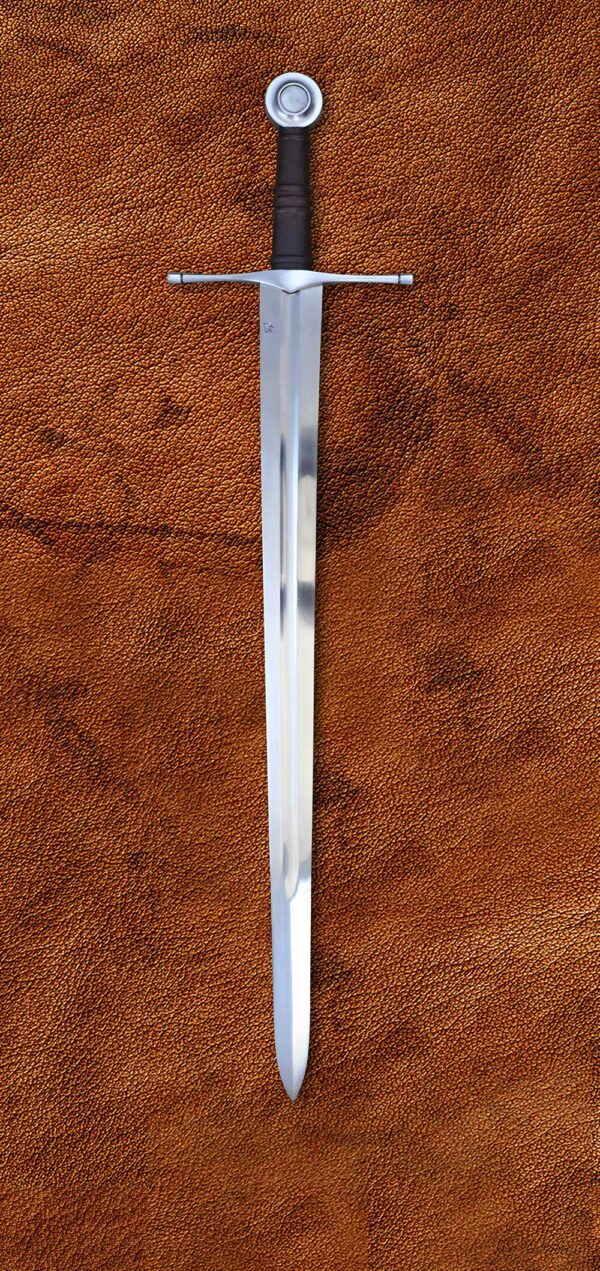
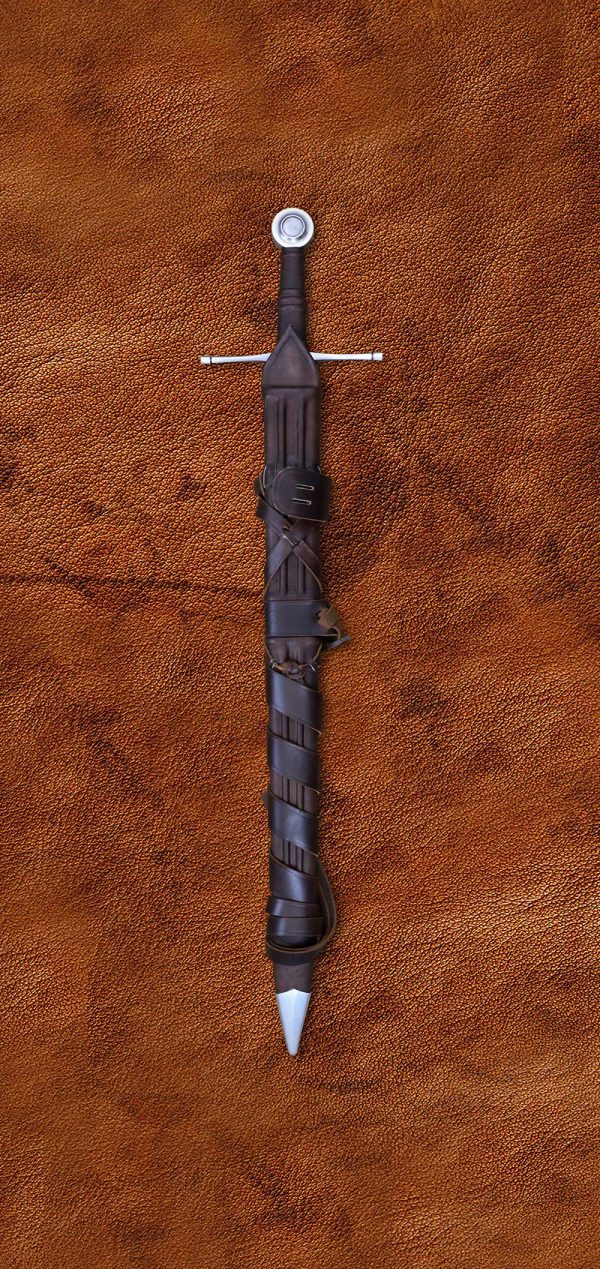
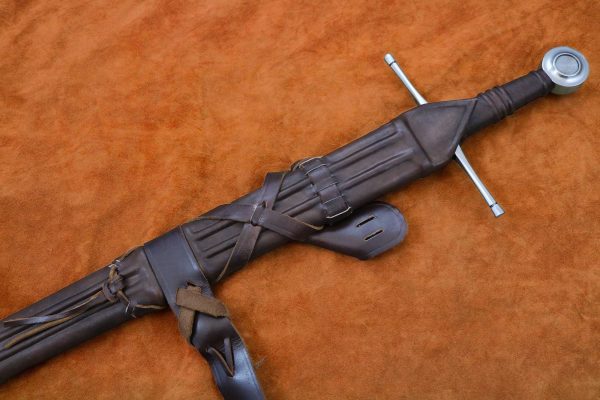
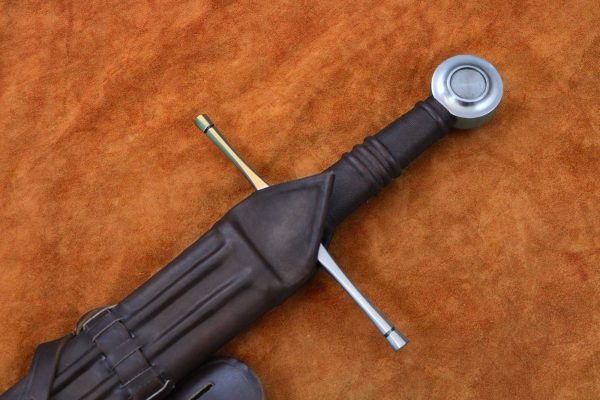
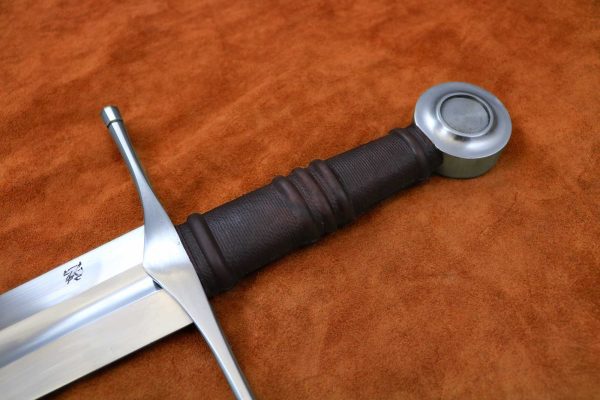
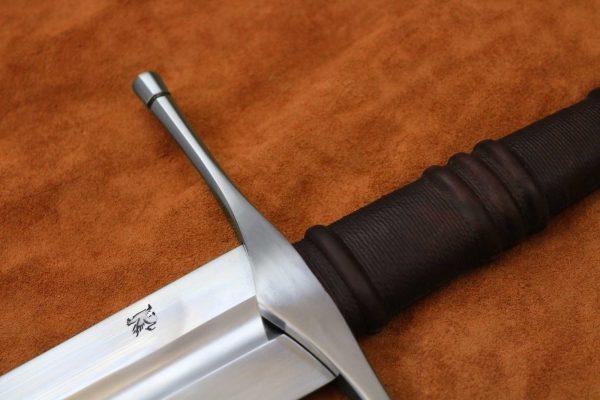
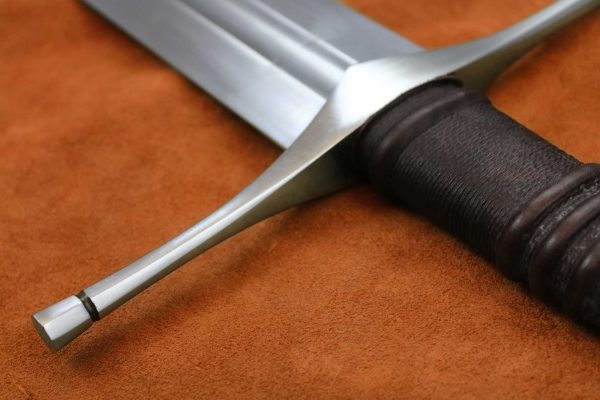
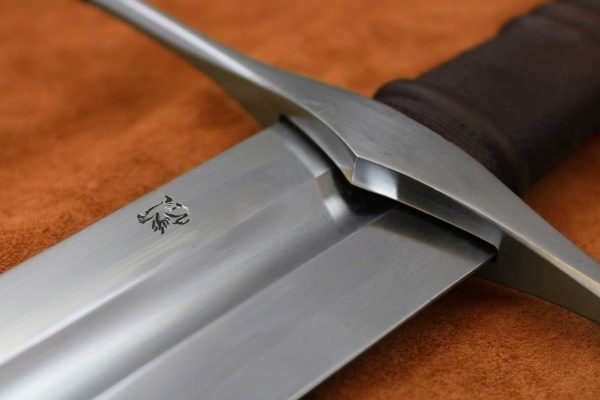
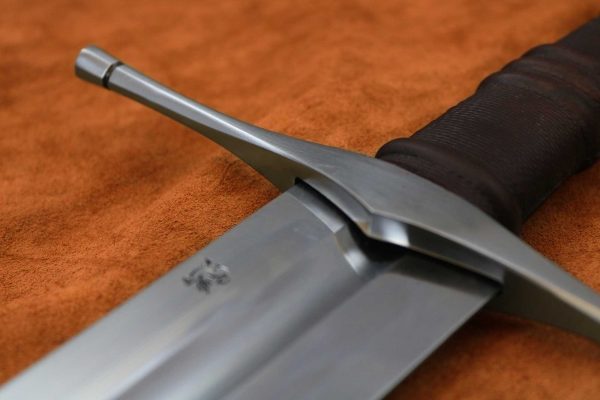
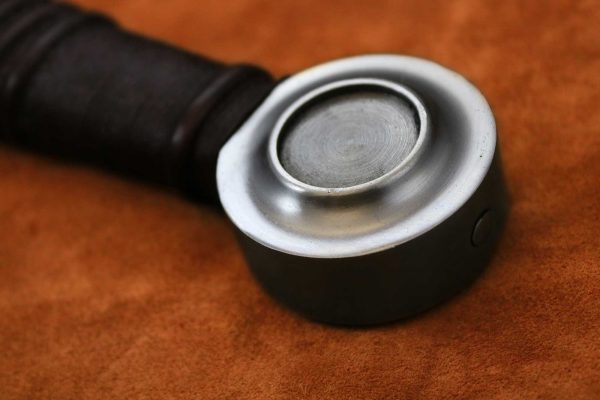
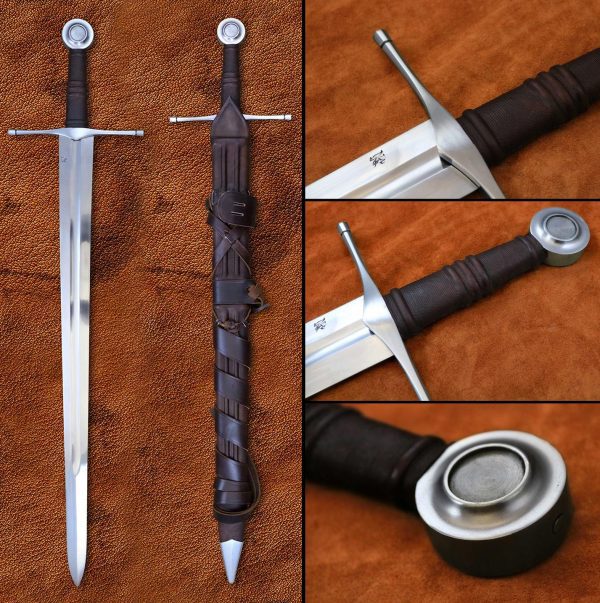
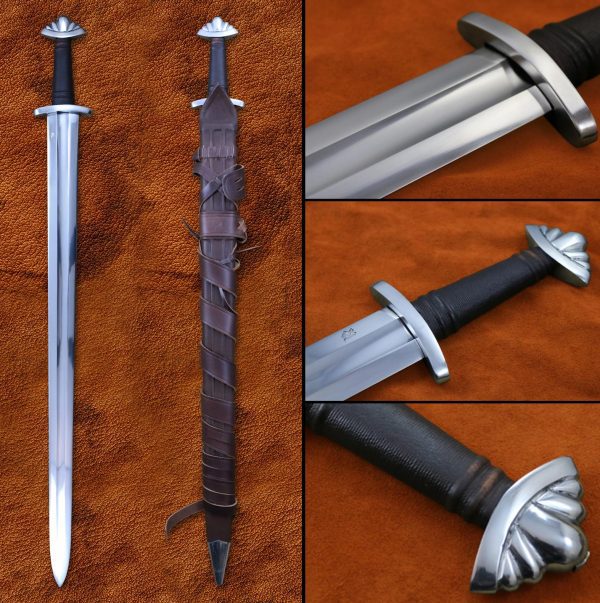
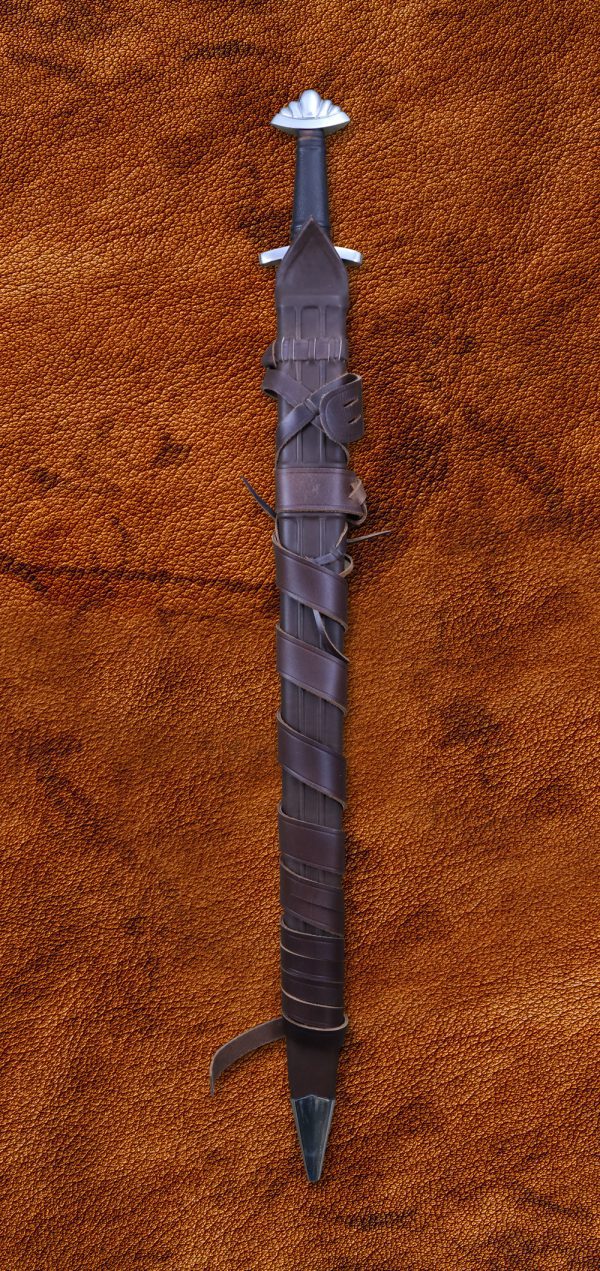
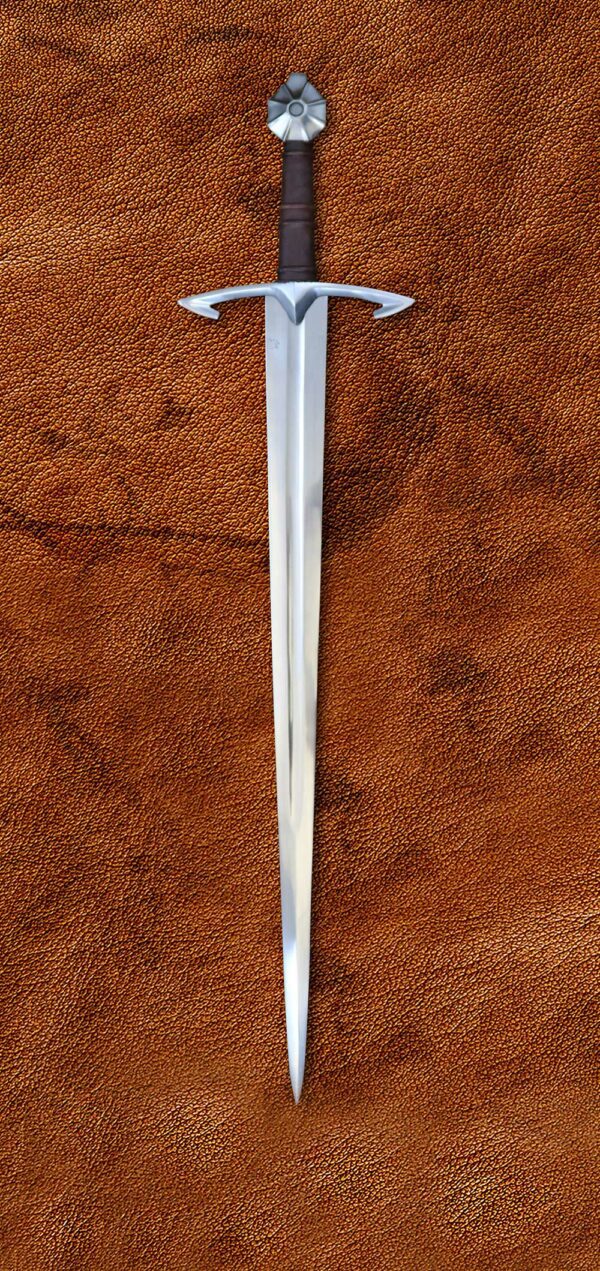
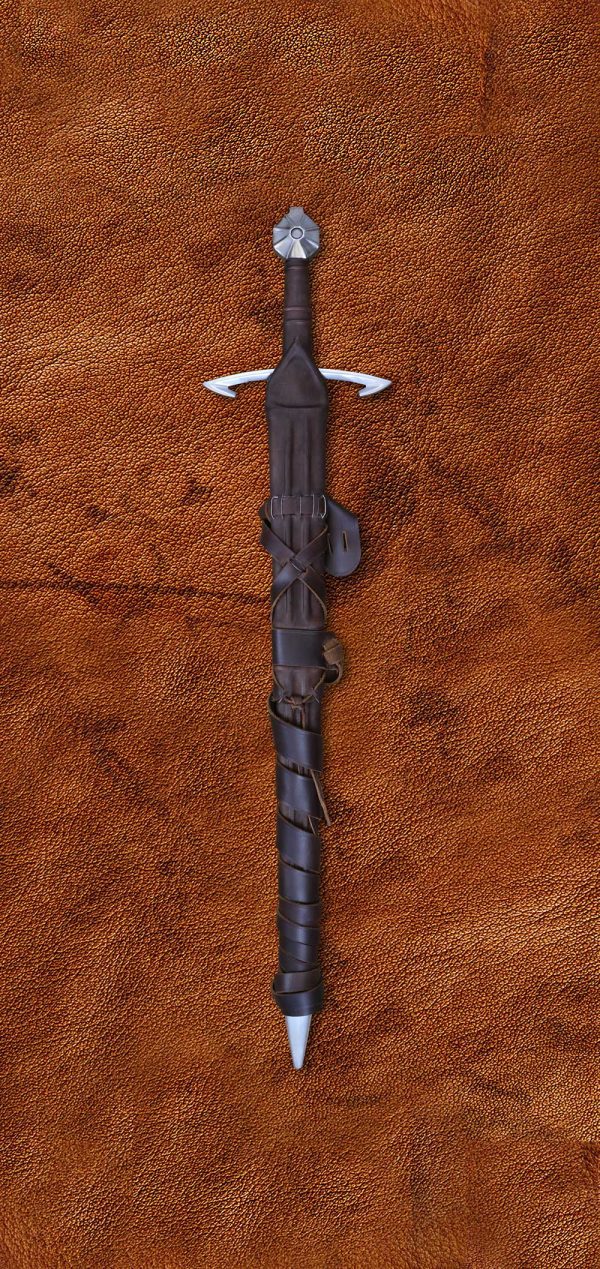
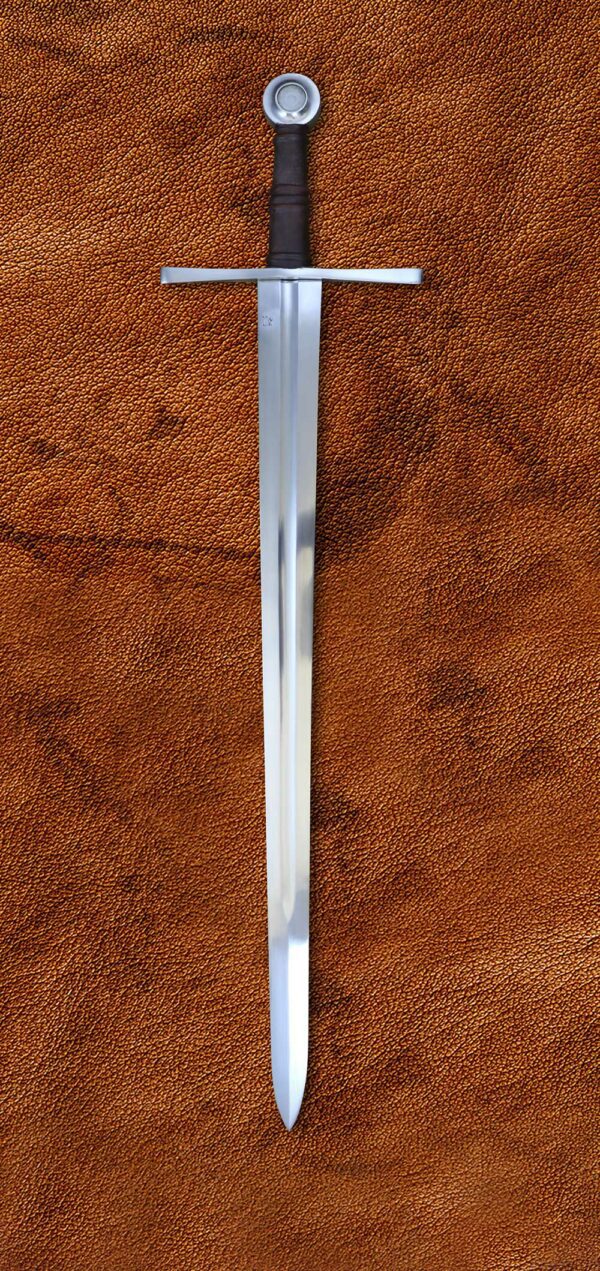
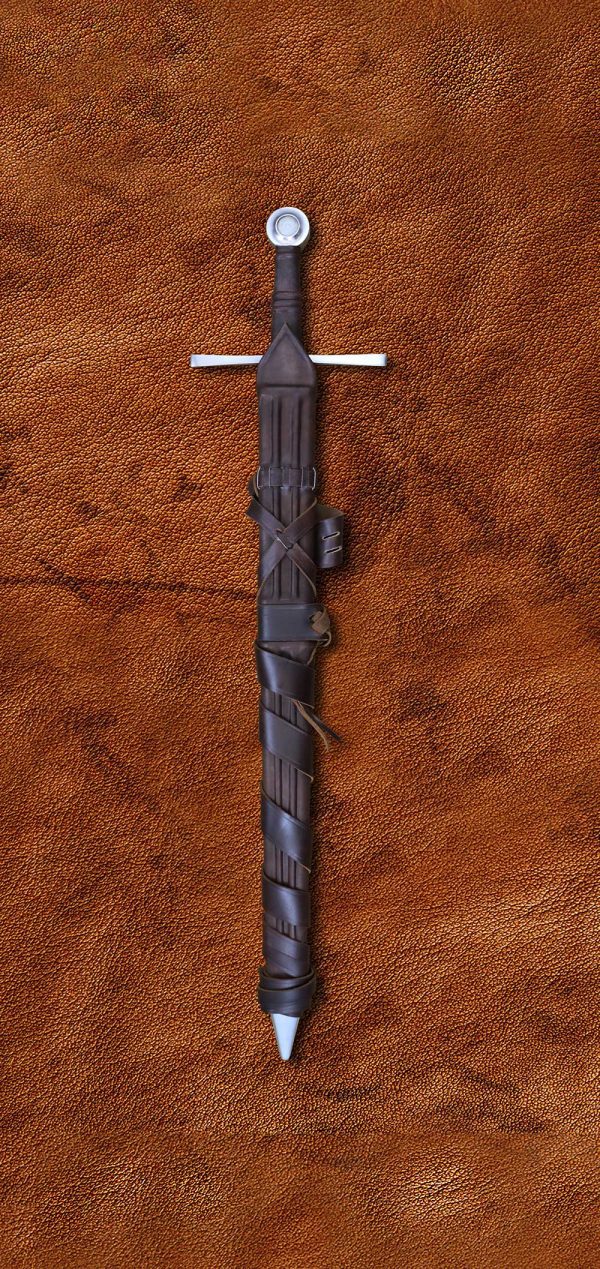
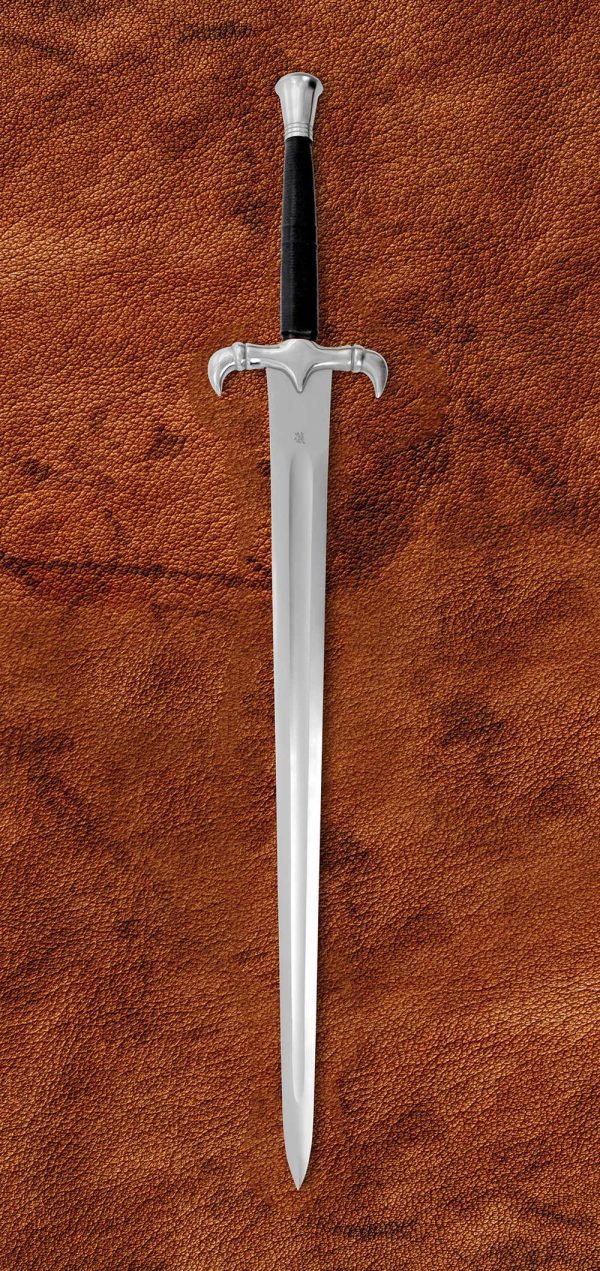
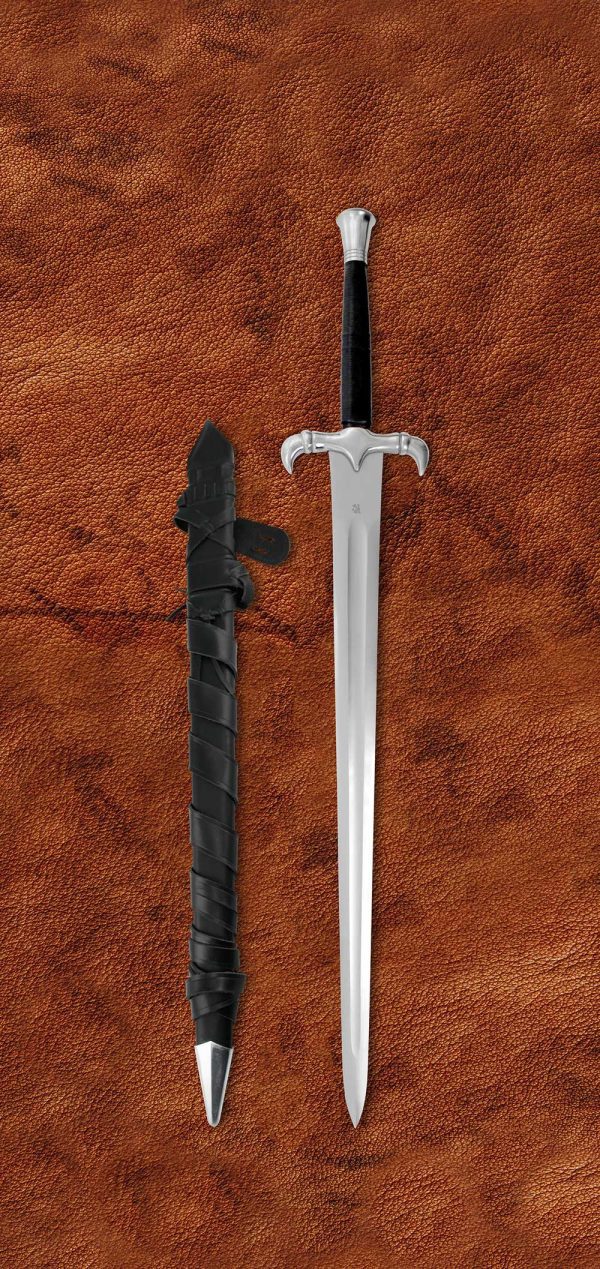
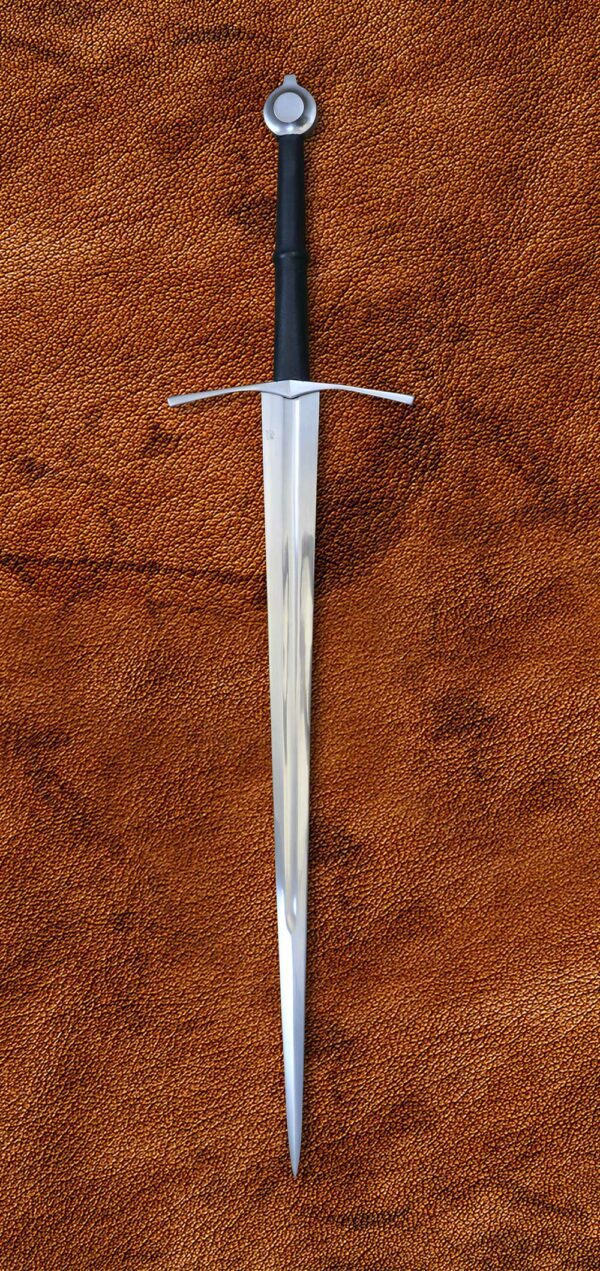
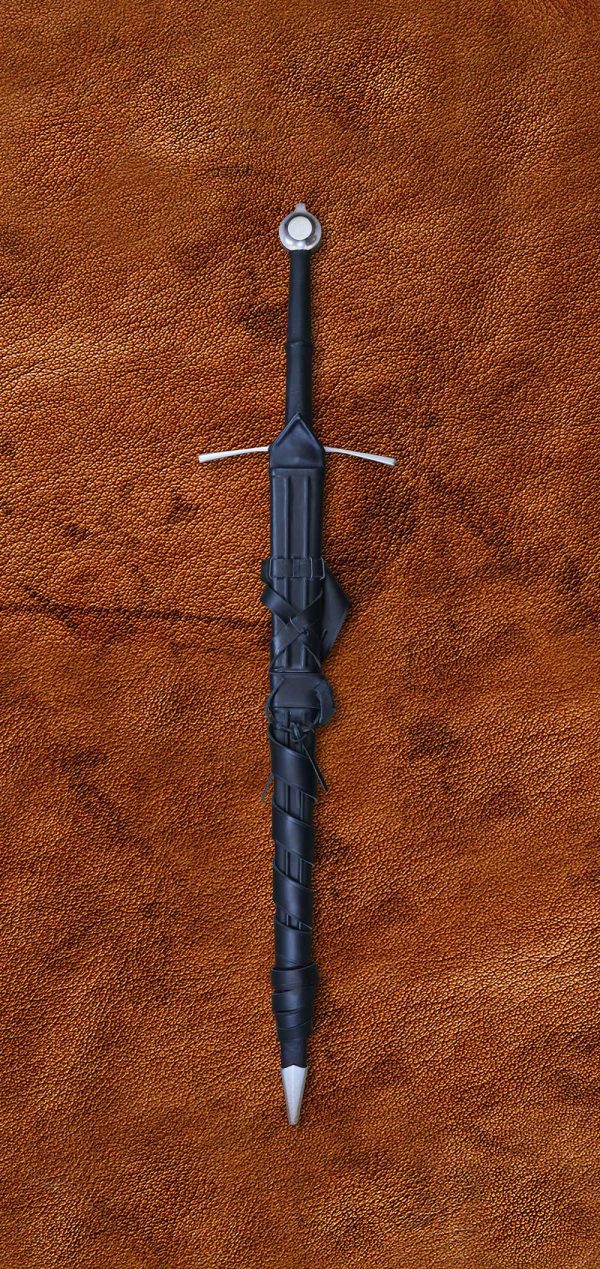
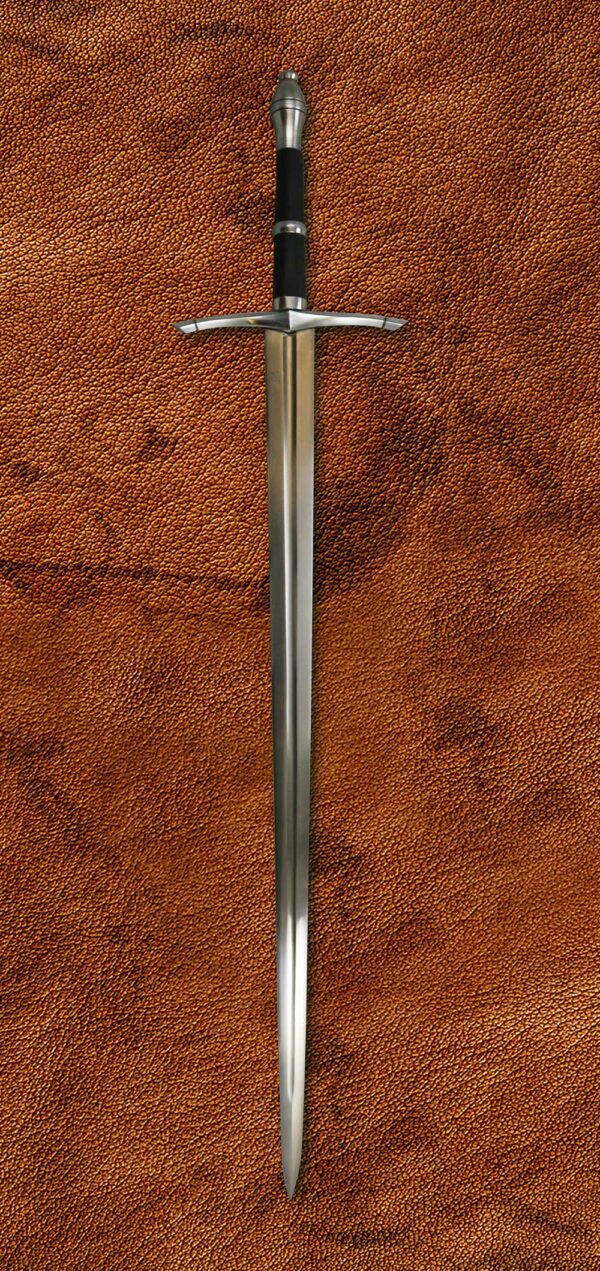
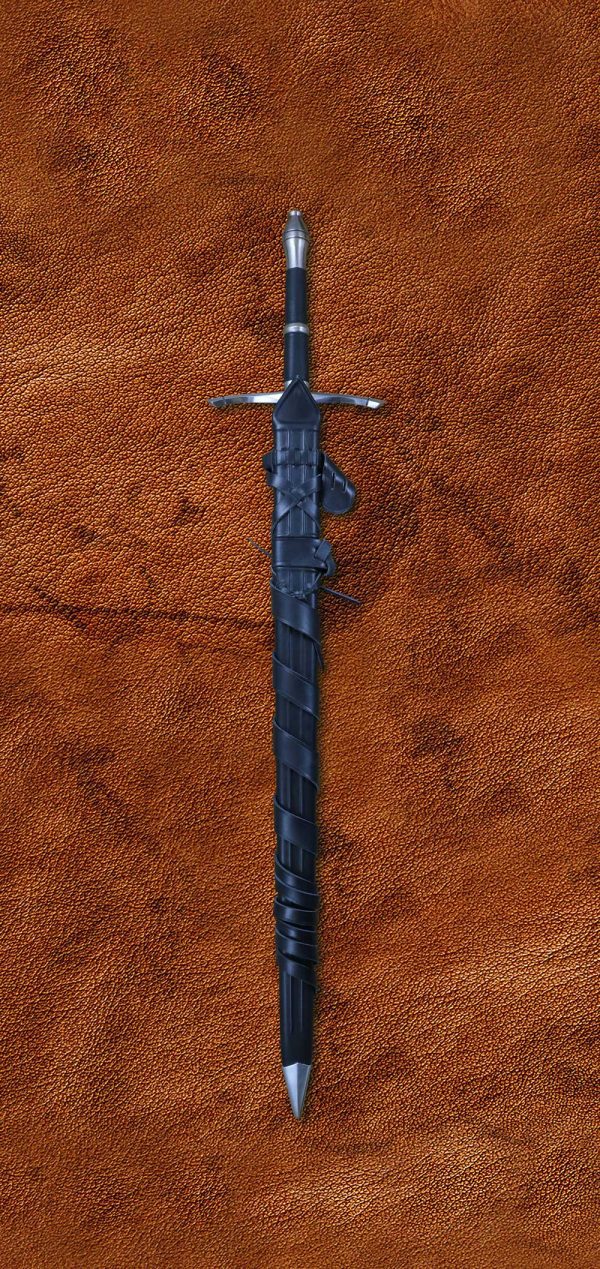
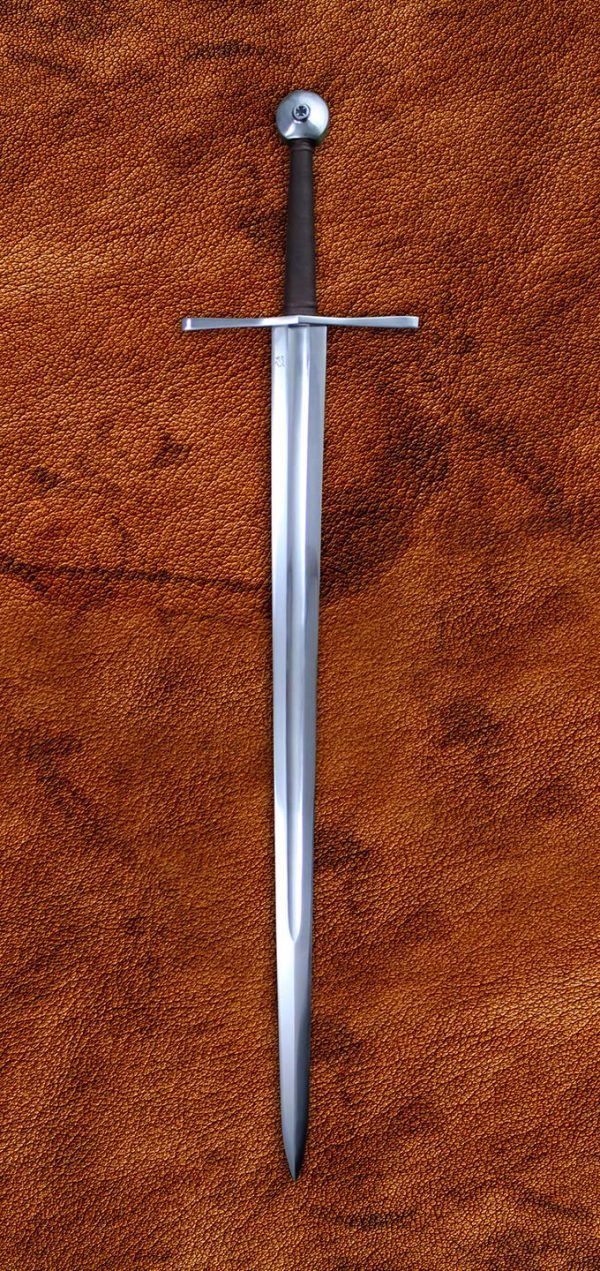
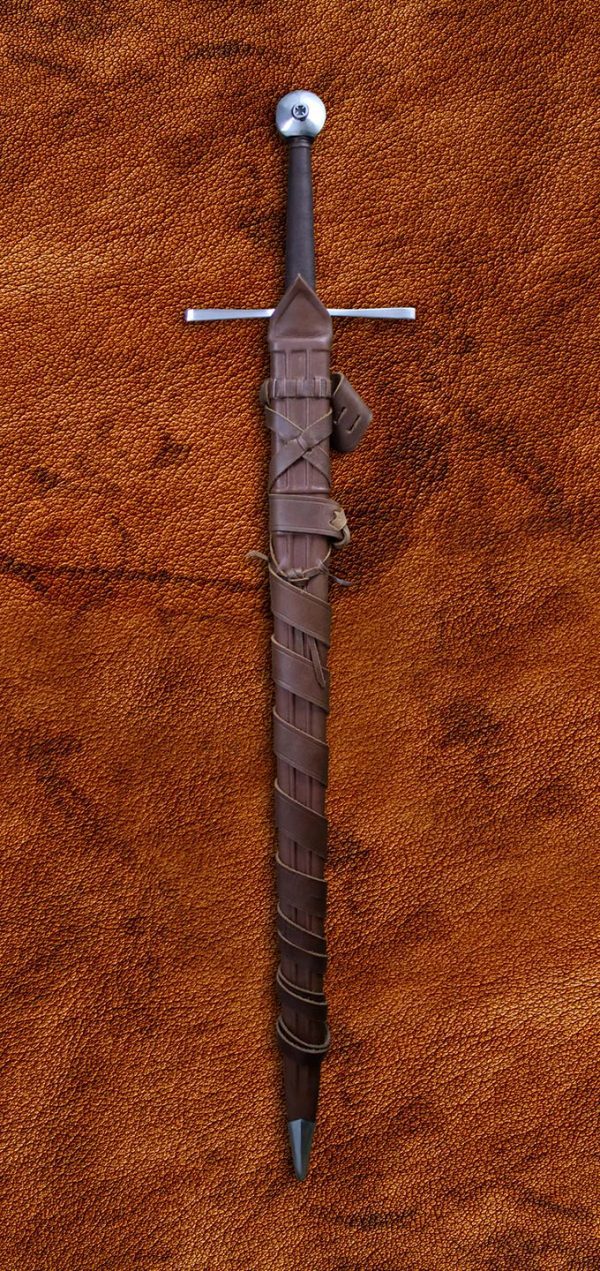
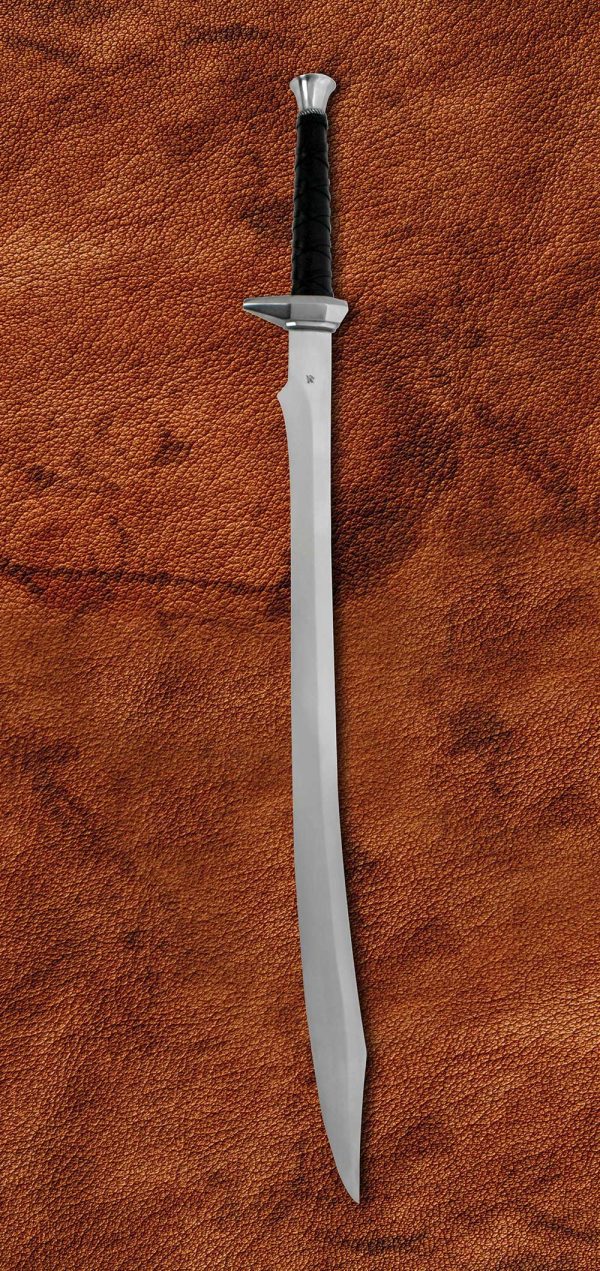
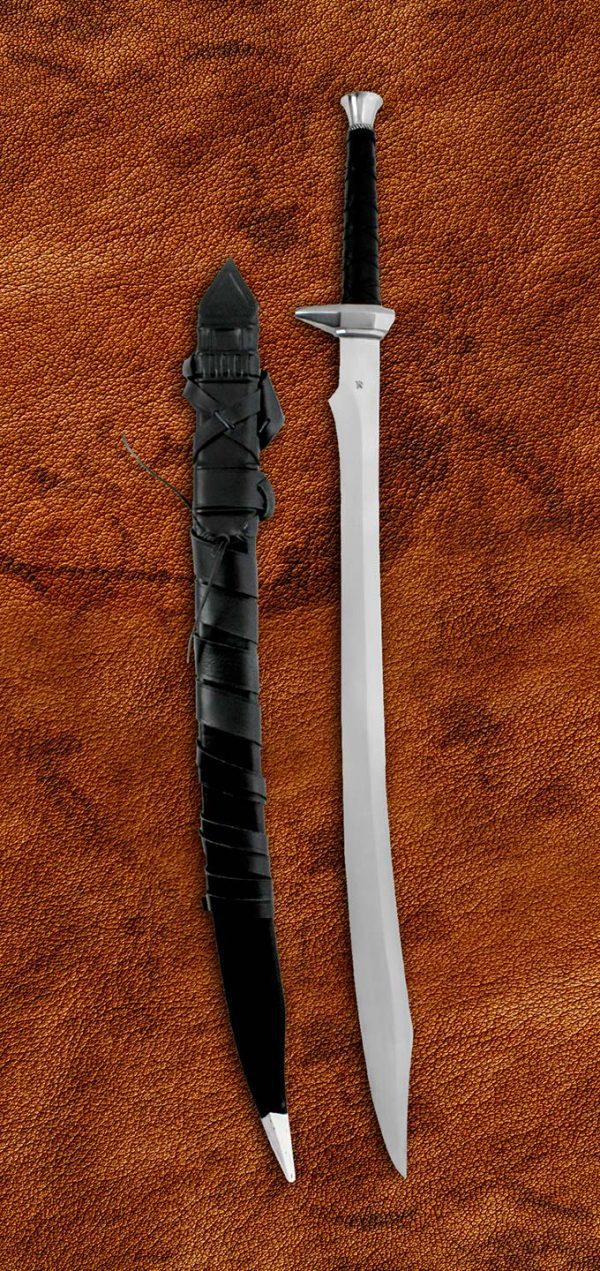
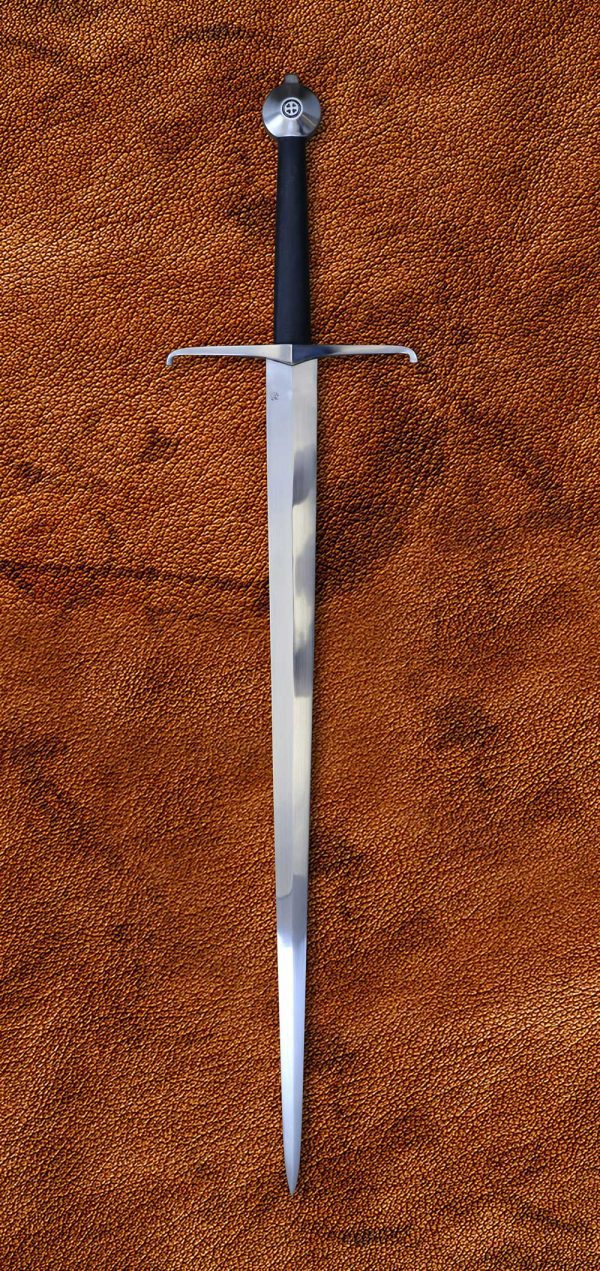
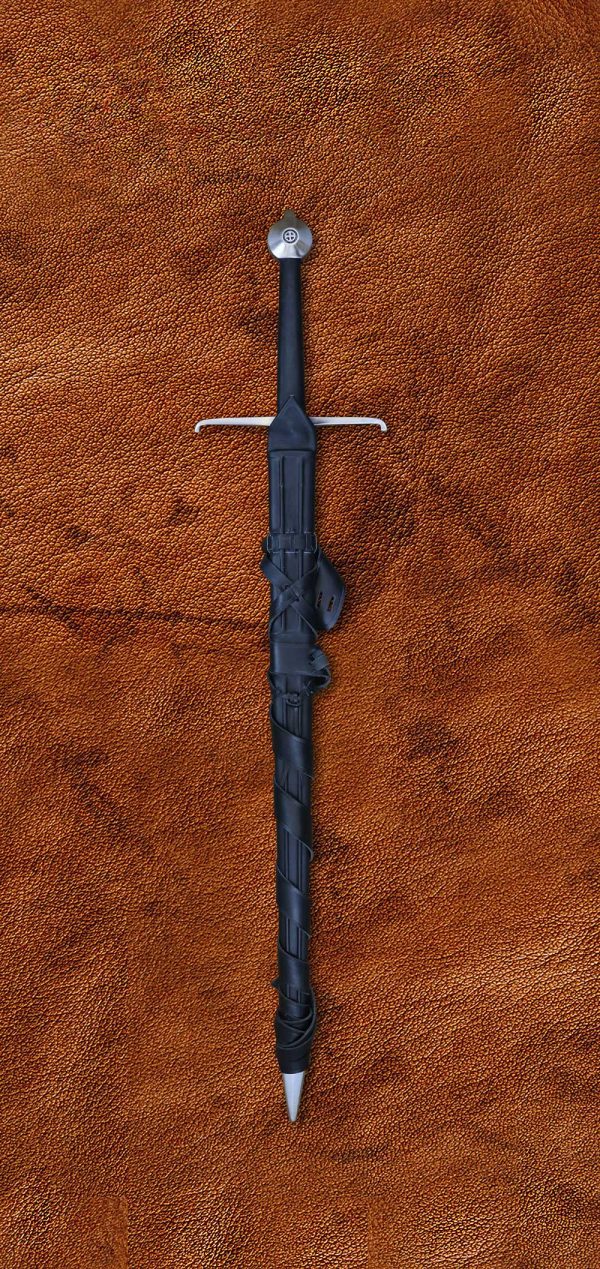
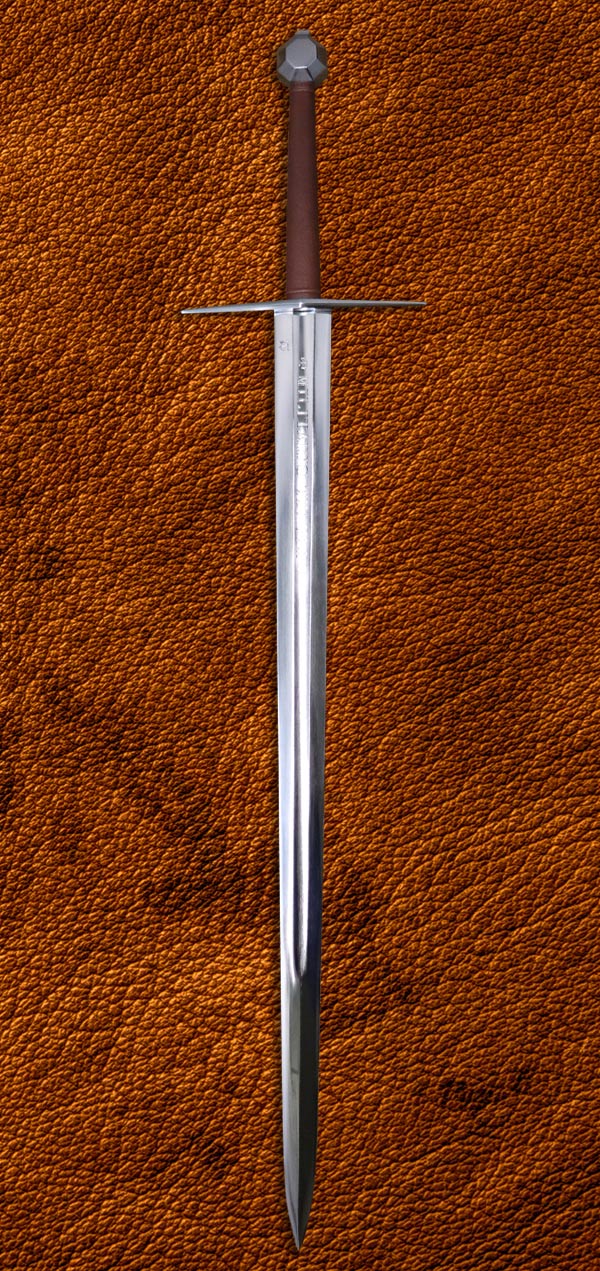
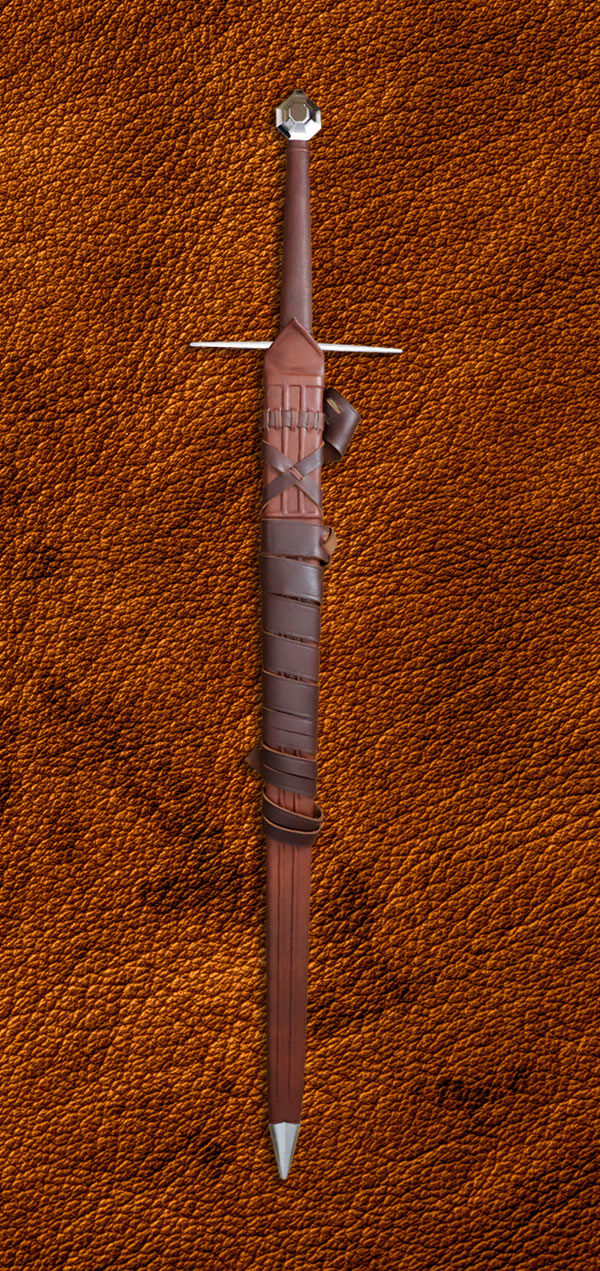
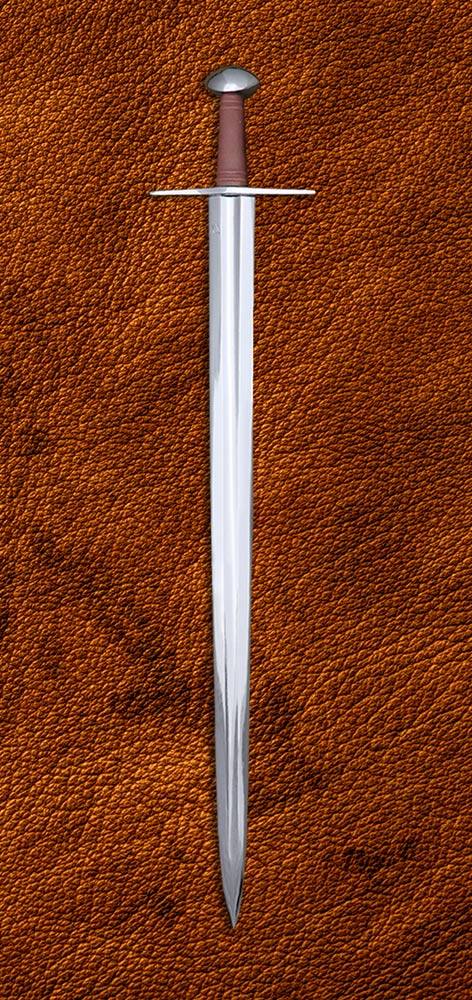
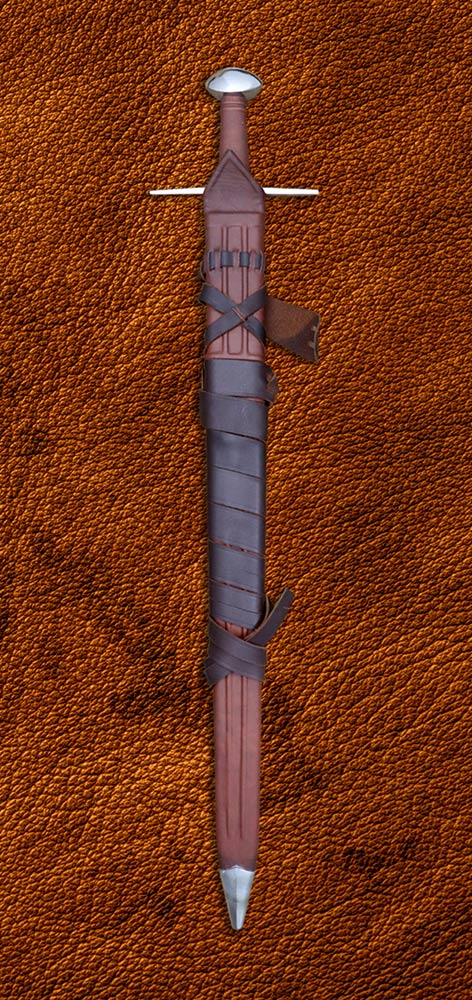
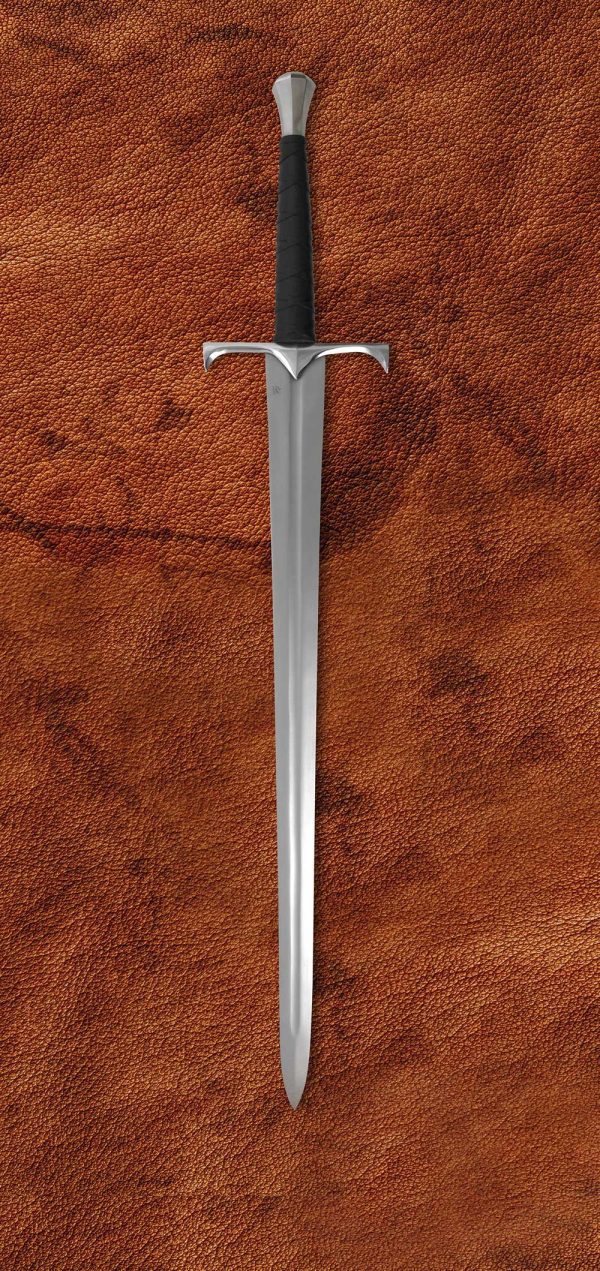
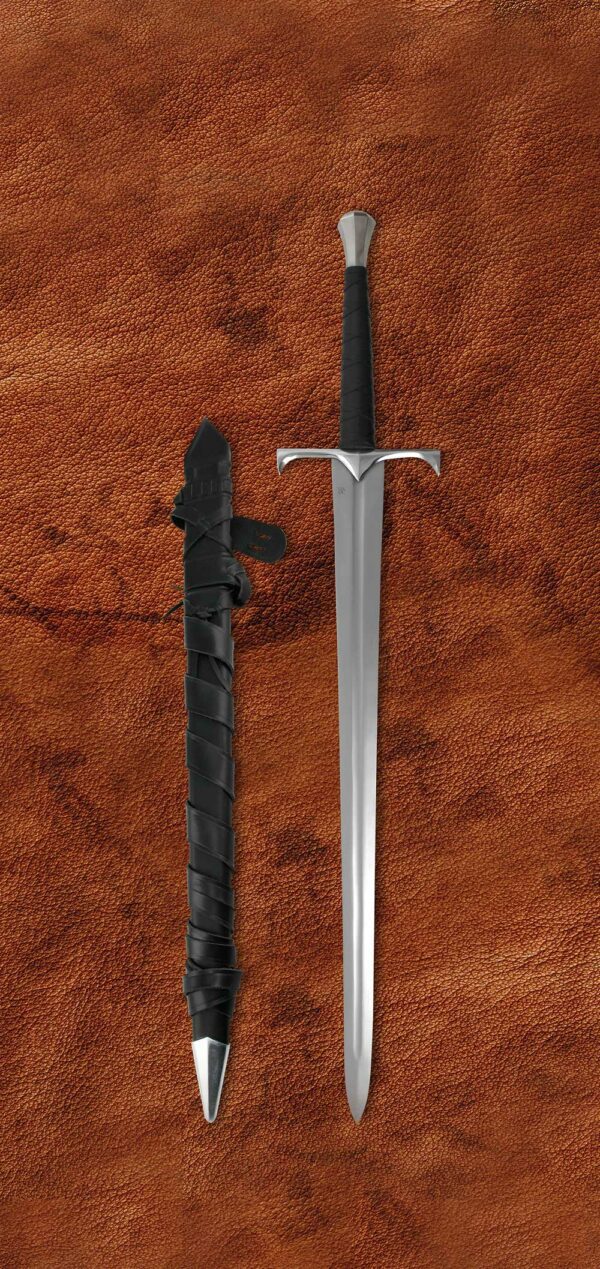
Nate –
This sword is my first and its everything I thought it would be. 4 stars because of the gap between the blade and the cross guard. Other than that, its impressive.
PG (verified owner) –
This is the second sword that I’ve purchased from DSA and I am very, very happy with it. It is perfectly balanced for a one-handed sword, with an absolutely beautiful blade geometry. I’ve got big hands and there is still enough room on the hilt for a modified two-handed grip, which I really like. To me, it’s the epitome of what a one-handed sword should be. it feels like holding a piece of history in my hand. Again, a very satisfied customer, and I’ll definitely be returning.
Jim Maughan Jr (verified owner) –
Not a historian or collector. But needed a good two handed and single handed sword . This and the two handed version are amazing !